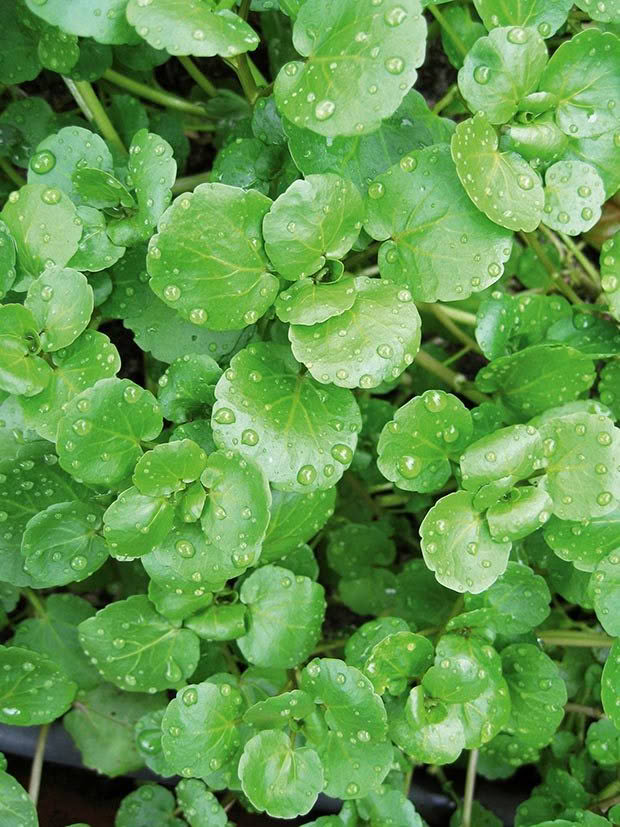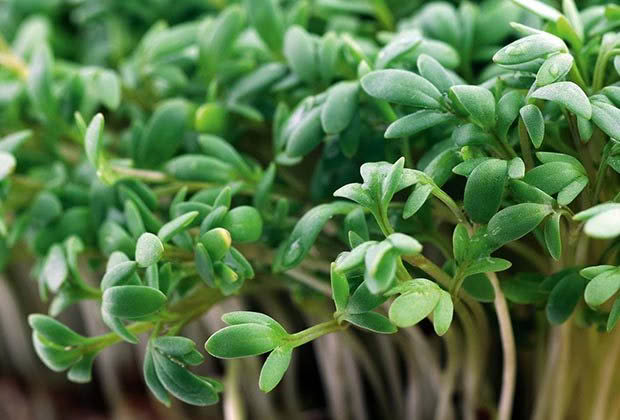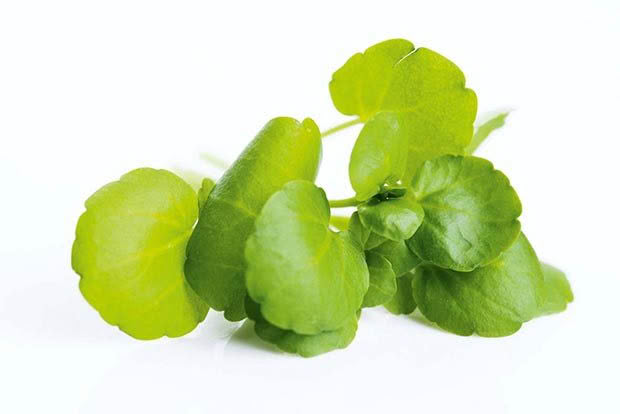9 tips for growing watercress

Words: Jenny Somervell
Watercress can be grown in pots, is surprisingly hardy and tolerates being frozen.
9 TIPS FOR GROWING WATERCRESS
1. Ideally watercress likes to be in a fresh running stream but that’s a big ask for most home gardens. I’ve heard it grows well under a dripping tap. I can’t see why not, provided there is free drainage (it dislikes stagnant water), and dripping taps abound in my garden, one of the many not-yet-got-around-to-it jobs.
2. Watercress can also be grown in pots which should then sit in a watertight container. Pop a few stones in the bottom, fill with good quality potting mix mixed with a little lime and grit, and set pots inside the larger container. Fill with water so the bases are sitting in water, but don’t let the level go over the rim.
3. Space young plants 22-30cm apart in sun with part shade on hot afternoons. Plants need constant fresh water so empty the large container every two to three days and replace with fresh water.
4. Apply liquid feed as needed to keep growth lush and healthy.
5. Watercress is surprisingly hardy and tolerates being frozen, although your buckets might not!

6. Watercress virtually propagates itself, but a quick way is to place stalks from a supermarket-bought plant in a jar of water, changing the water every few days. Fine roots will quickly appear and the rooted plantlets can be transplanted into containers.
7. Seeds germinate in 8-10 days. They are best sown in spring or autumn as plants tend to run to seed in mid-summer.
8. Watercress does best in a rich, fertile soil.
9. A large leaf, higher-yielding variety called Aqua Large Leaf is available from King Seeds, and there is also a sterile, bronze-leaved variety, Nasturtium microphyllum.
HOW TO HARVEST
• Use scissors to snip the top stems when they are about 15cm long but never take more than a third of the plant at any one time.
• Do not pull on stems as the whole plant may come out of its container.
• Watercress wilts quickly and is best harvested for immediate use. It will hold in the fridge up to 3 days in a plastic bag but prefers being submerged in water. It will not dry or freeze.
WARNING: WHY YOU SHOULDN’T HARVEST IT FROM THE WILD
Harvesting from the wild is not recommended, especially in sheep and cattle country where the eggs of the deadly liver fluke parasite (Fasciola hepatica) may be hidden in the stems.

8 TIPS FOR USING WATERCRESS
1. Use in place of lettuce or with lettuce in salads or sandwiches for a peppery tang.
2. Sauté in oil and season with sliced mushrooms, ground black pepper and freshly grated cheese.
3. Add finely minced leaves to crepe batter, butter or fresh cream and use on top of grilled chicken or fish.
4. Mix with radish, alfalfa, and bean sprouts for a crunchy sandwich filling.
5. Blend with cold tomato juice, fresh basil and a dash of tabasco sauce for a vitality-boosting drink.
6. Add chopped watercress to omelettes or scrambled eggs or pasta sauce.
7. Add to soup just before serving for a pungent flavour.
8. Make a pesto – replace the basil with watercress.
Love this story? Subscribe now!
 This article first appeared in NZ Lifestyle Block Magazine.
This article first appeared in NZ Lifestyle Block Magazine.
